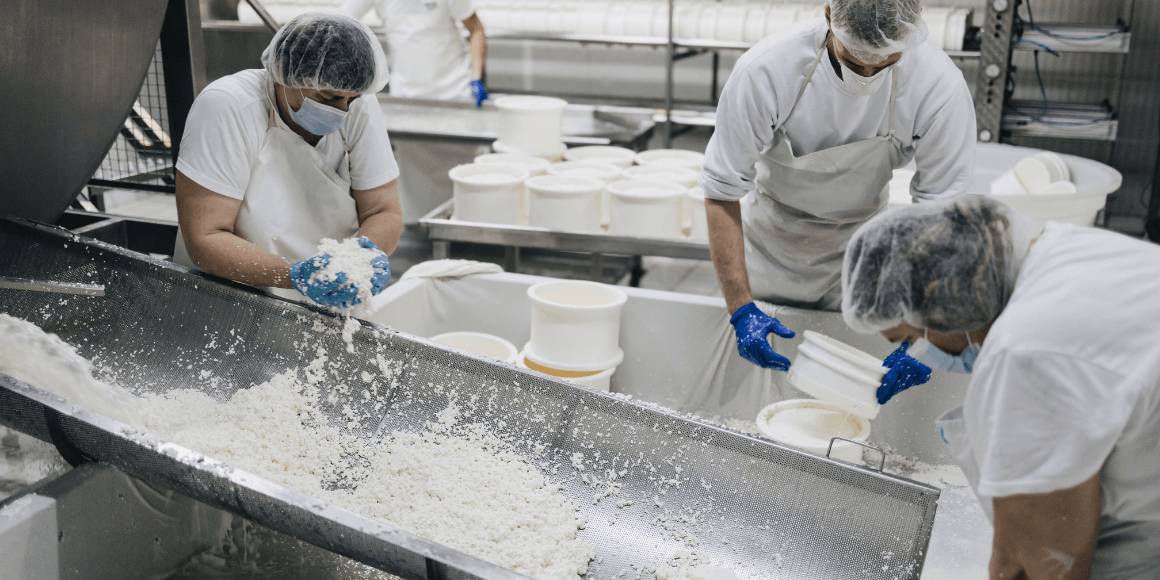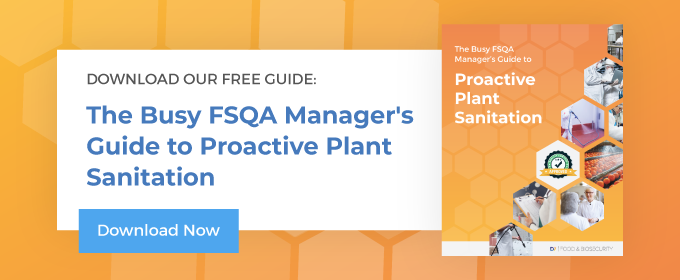
Bacterial biofilm is a serious problem for food processing plants and, ultimately, consumers. Preventing biofilms from forming in the first place is the best possible solution, but when they do appear, targeted action is required. That’s why preparation for biofilm removal is critical in a food processing environment. Ensure your team understands what biofilms are, why they grow, and how to properly address them.
The Risk of Biofilms in Food Processing
With 80 percent of bacterial infections in the U.S. potentially linked to foodborne pathogens in biofilms, this is not an issue to be taken lightly. Food processors are highly aware of the long-term brand damage that can come with an outbreak, translating to costly recalls, lost revenue, and a major investment in reputation management.
In addition to the risk to consumers, bacterial biofilm can impact production because of the time and resources required to shut down lines and perform a deep clean. It’s also worth noting that biofilms can damage food processing equipment—another strong reason for a preventive approach.
How Biofilms Grow
Bacterial biofilms grow within an extracellular polymeric substance (EPS) matrix, which forms a protective barrier that makes it difficult to reach and remove the pathogens within. They can grow on many surfaces, including those most commonly found in food processing environments, such as metal, rubber, wood, tile, and plastic.
When bacteria bind to a surface, they grow communities and produce an EPS matrix. In the early stages of growth, binding to the surface is reversible and the bacteria is removable with chemicals, mechanical action, or a combination of the two. However, if these colonies are not removed quickly, they can develop into mature biofilms. As the EPS matrix becomes three-dimensional and more resilient, it becomes much more difficult to remove.
Why Biofilms Grow
Biofilms grow when bacteria are left on a surface long enough to multiply and produce an EPS matrix. Depending on the type of bacteria and surrounding conditions, this could happen in a matter of days, or even as quickly as a few hours.
The reason biofilms grow is as old as time—for survival. The EPS matrix shields the bacteria within by providing physical and mechanical resistance, protection from chemicals, and pathways to get water and nutrients.
Options for Biofilm Removal
When biofilm forms, there are a few ways you can address it:
Mechanical Scrubbing
Detergent penetrates biofilm and scrubbing disrupts it, but there are some downsides to this approach. In addition to being labor-intensive and inefficient, mechanical scrubbing depends on people reaching every area of an invisible biofilm. If any areas are missed, bacteria and biofilm are left behind to grow and spread.
High Heat
Most bacteria cannot withstand high heat sustained for at least 20 minutes. However, not all equipment or surfaces can handle high temperatures, especially sensitive electronics. This approach also presents safety risks to employees and cannot be used in all situations.
Oxidizing Disinfectants
Products such as bleach, ozone, chlorine dioxide, and other oxidizers can be effective, but they also have downsides. Certain oxidizers that react with biofilms may also damage the surrounding surfaces or equipment. Other oxidizers kill bacteria without removing the surrounding EPS matrix, making it easier for future bacteria to grow in a protected environment.
EPA-Registered Disinfectants
Consider using products designed to kill bacteria and destroy biofilm by penetrating the biofilm and working from the inside out. These products remove biofilm without mechanical action, saving time and labor. Only a handful of products on the market are currently EPA-approved for biofilm removal, so it’s important to check the label claims when choosing a product.
How D7 Removes Biofilms Without Mechanical Action
D7’s unique formulation allows you to remove biofilm without mechanical action. This presents major advantages for difficult-to-reach areas such as ceilings, pipes, drains, crevices, and so on. When you use D7, no hand-scrubbing is required, meaning you can save on manual labor and reduce the risk of missing spots.
D7 foam easily foams onto visible areas, clings to vertical and overhead surfaces, and expands into the smallest cracks and crevices. The proprietary chemical formulation penetrates biofilms to kill the bacteria within and remove them from surfaces without any mechanical action.
Get D7 for Biofilm Removal
D7 is EPA-approved for killing and removing bacterial biofilms. Save time and money and reduce the risk of cross-contamination by using D7 for preventive maintenance, periodic deep cleans, and biofilm removal in your food processing facility. To learn more, download The Busy FSQA Manager’s Guide to Proactive Plant Sanitation.


